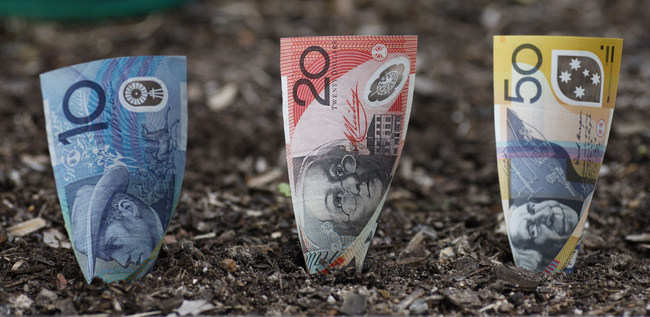Retirement
Tips for last-minute super contributions
The end of financial year is fast approaching. And this year, 30 June falls on a Sunday. If you’re after a tax deduction for a last-minute super contribution, there are a few things you need to know, otherwise you could miss out.
Tips for last-minute super contributions
The end of financial year is fast approaching. And this year, 30 June falls on a Sunday. If you’re after a tax deduction for a last-minute super contribution, there are a few things you need to know, otherwise you could miss out.

How to contribute
Making super contributions to your fund is the easy bit. You can transfer cash electronically, or you can transfer a limited range of investments to your fund and claim a tax deduction for the value transferred. If it’s listed shares and other securities, then the transfer will take place by an off-market transfer.
You can also transfer commercial or farming property to your fund as a contribution. However, depending on the value of the property, you need to be careful because the value transferred as a contribution may breach the caps, with excess contribution penalties applying.
Timing your contribution

If you have made the contribution to the fund well in advance of 30 June, there should be no issue if you wish to claim the deduction.
However, if you delay to the last minute, you could be in for a shock as the contribution needs to be made before the financial year ends. Be sure to give yourself enough leeway – some banks may not include Sunday in their normal processing times.
One of the few exceptions the Australian Taxation Office (ATO) gives is for cheques: where a cheque is given to a fund prior to 30 June but the fund doesn’t bank it until the new financial year, the ATO will still regard it as a pre-30 June contribution.
But the exception won’t apply if the transfer has been made electronically and doesn’t register in the fund’s bank account until next financial year. There have already been several tax cases involving the timing of contributions where the taxpayer was the loser.
How much to contribute
The current cap for tax-deductible super contributions is $25,000 and includes any contributions made by your employer, salary sacrifice and superannuation guarantee contributions, as well as any personal contributions you claim as a tax deduction. Once you have exceeded the cap, any excess plus a penalty interest component can be taxed at your personal tax rate providing you withdraw it from your fund. Or you can leave it in the fund and the excess will be taxed at 47 per cent and also be counted against your non-concessional contribution cap.
Make sure that before you make the contribution, you make an estimate of other tax-deductible contributions that have been made to the fund for you, such as employer super contributions. This will allow you to maximise the tax deduction without having some of the contribution being excess or treated as a non-concessional contribution.
Claiming a tax deduction for personal super contributions does have some limits as you aren’t permitted to allow it to create or increase a tax loss. For example, if you’re a sole trader or a partner in a business that has made a tax loss for the year and you haven’t received any other taxable income, you won’t be able to claim a tax deduction for personal superannuation contributions as the amount claimed will add to the tax loss you have made from the business.
Making the election
Before you can start claiming a tax deduction for personal contributions, you must let your super fund know that you are going to claim the deduction. The fund will then send you an acknowledgement of the amount you intend to claim in your personal tax return. You will need to provide the election to the fund before your income tax return for the relevant tax year is lodged, or by the end of the tax year after the contribution has been made, whichever happens first. If you provide the election to your fund after the required time, you won’t qualify for the deduction.
Get an acknowledgement
Don’t forget that your fund needs to acknowledge receipt of the election, which is an essential part of the process. If your fund doesn’t give you an acknowledgement, which includes the amount you are going to claim, you may miss out on the tax deduction.
Nestegg consider also on how to claim the unpaid super.
About the author

About the author


Superannuation
Aware Super takes on Australia's gender retirement gap, aiming for financial equality
Aware Super, one of Australia's largest superannuation funds with a 70 per cent female membership, is on a mission to close the gender gap that sees women retire with 30 per cent less super than men ...Read more

Superannuation
Age Pension increase prompts Australians to review their finances
The increase in the Age Pension, which takes effect today, should serve as a prompt for many older Australians to ensure they're maximizing their income as cost-of-living pressures persist, according ...Read more

Superannuation
Retirement reimagined as Australian optimism meets inflation worries in 2023 super fund insights
The latest reports on retirement confidence among Australians present a spectrum of sentiments, with fresh data revealing surprising optimism in some quarters while exposing underlying concerns in ...Read more

Superannuation
Aussie retirees face a shortfall as ideal retirement nest egg doubles what super will deliver
As Australians look towards retirement, the desired superannuation balance that many believe will ensure a comfortable retirement has significantly outpaced what they are on track to actually save. Read more

Superannuation
Super funds eye 6.5% return in 2023, despite a rocky start
As the year draws closer to its climax, Chant West unveils its projection for super funds in what can only be described as a year of economic ebbs and flows. Read more

Superannuation
A deep dive into Australia’s superannuation system
Australia has a robust retirement savings system known as superannuation designed to provide financial security to Australians in their post-work years. Read more

Superannuation
50,000 super fund members impacted by data breach
Around 50,000 member records were impacted by the breach that took place earlier this month. Read more

Superannuation
Two super funds tipped to reach $1tn by 2040
KPMG has released the findings from a new review. Read more

Superannuation
Aware Super takes on Australia's gender retirement gap, aiming for financial equality
Aware Super, one of Australia's largest superannuation funds with a 70 per cent female membership, is on a mission to close the gender gap that sees women retire with 30 per cent less super than men ...Read more

Superannuation
Age Pension increase prompts Australians to review their finances
The increase in the Age Pension, which takes effect today, should serve as a prompt for many older Australians to ensure they're maximizing their income as cost-of-living pressures persist, according ...Read more

Superannuation
Retirement reimagined as Australian optimism meets inflation worries in 2023 super fund insights
The latest reports on retirement confidence among Australians present a spectrum of sentiments, with fresh data revealing surprising optimism in some quarters while exposing underlying concerns in ...Read more

Superannuation
Aussie retirees face a shortfall as ideal retirement nest egg doubles what super will deliver
As Australians look towards retirement, the desired superannuation balance that many believe will ensure a comfortable retirement has significantly outpaced what they are on track to actually save. Read more

Superannuation
Super funds eye 6.5% return in 2023, despite a rocky start
As the year draws closer to its climax, Chant West unveils its projection for super funds in what can only be described as a year of economic ebbs and flows. Read more

Superannuation
A deep dive into Australia’s superannuation system
Australia has a robust retirement savings system known as superannuation designed to provide financial security to Australians in their post-work years. Read more

Superannuation
50,000 super fund members impacted by data breach
Around 50,000 member records were impacted by the breach that took place earlier this month. Read more

Superannuation
Two super funds tipped to reach $1tn by 2040
KPMG has released the findings from a new review. Read more






